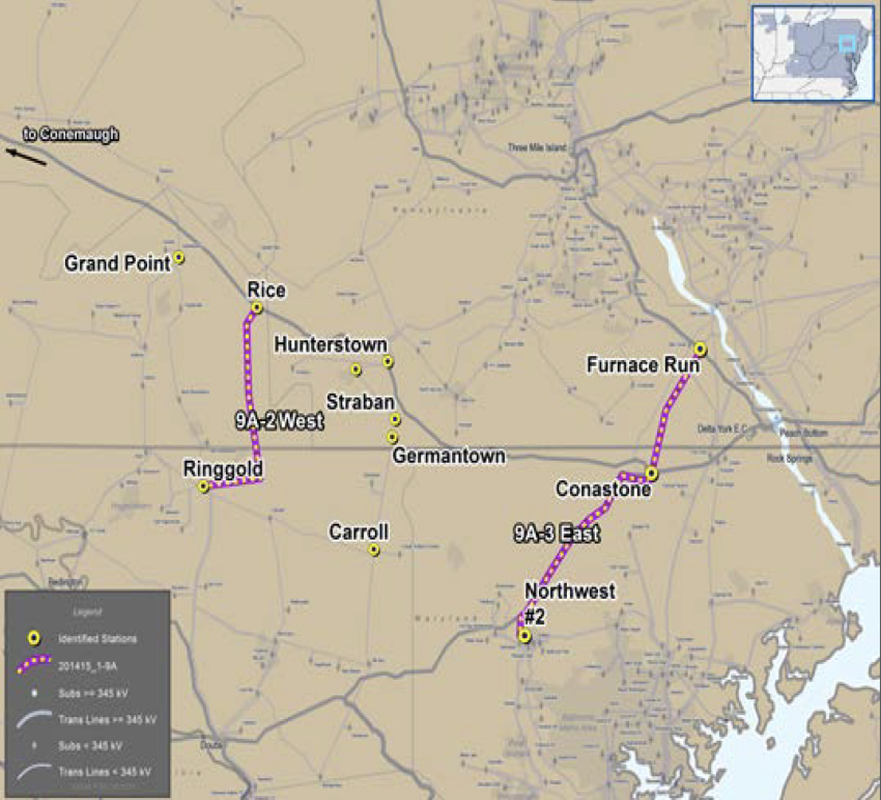In the traditional sense, public utilities have exercised eminent domain to electrify or otherwise power our country. The property taken was used to provide basic service to the utility's customers. Everyone has electricity. Hallejuah!
But, over time, as utilities got built out to serve everyone, eminent domain was no longer needed for that purpose. Then utilities used it to enhance their systems and make them more reliable.
And then the slippery slope started.
Utilities expanded their systems in order to wheel power over larger areas and interconnect with other utilities. The idea now is that all power produced must be available for use by anyone... anywhere. This is no longer about reliability, but about economics. Eminent domain is now routinely used to build transmission intended to ship "cheaper" power to customers near expensive sources of generation. Some transmission is even built to ship "greener" power to customers who haven't built their own "greener" generators. Regulators may believe that if the cost of building transmission is less than the anticipated savings, then it's in the public interest.
But the public isn't benefiting equally. Transmission may only reduce prices for one specific geographic area, although the actual line and property taken via eminent domain is routed through a different geographic area that receives no benefit. Regulators tie themselves up in knots in order to create trumped up "benefits" for affected regions, although the benefits are never spread equally.
The country exploded in the wake of the Supreme Court's ruling on Kelo v. New London. In that case, the City was permitted to use eminent domain to take property for "economic development" purposes. Essentially, if private property could generate more tax revenue and job opportunities if owned by someone else, then that was reason enough for the taking. Nobody liked it. It was in the news for a long time. Much was written about it. Many states reacted by revising their eminent domain statutes to protect their citizens. Even now, just about everyone agrees that economic development isn't reason enough for eminent domain. Everyone's house would provide more jobs and tax revenue if it was a Walmart. It affects us all.
A new assault has begun. Corporations posing as "public service" utilities want to use eminent domain to build pipelines, transmission lines, and other "public utility" infrastructure that actually serves only their bottom line. It's not about serving "the public" when the pretend utility doesn't even have any customers. Instead of presenting their "line to nowhere" as the economic development project it truly is, these shysters pretend it's a "public service" utility in the hope of fooling regulators to grant it a utility's eminent domain authority.
Let's take the Dakota Access Pipeline, for example, since it's in the news so much (well, at least the non-mainstream news).
In fact, very much like what happened in Nebraska, the resistance in Iowa against the Dakota Access pipeline is led by ranchers furious at what they see as the state's complicity in a private land-grab. Earlier this week, a judge denied a stay on construction of the pipeline, kicking the decision over to the Iowa utility board. The plaintiffs in that case accused Energy Partners of blackjacking them into granting easements by threatening to have their land condemned, a charge that the company's lawyers denied, but one that is more than familiar to the people in Nebraska who fought TransCanada.
"This has been the slow erosion of property rights," said Kleeb. "This is the only way that pipelines will be stopped. Construction companies will find ways to get around permits and other obstacles. That has to be brought through the courts."
There are other problems as well. On Wednesday, The Des Moines Register ran a story in which farmers who were paid to allow an easement through their property along the pipeline's route in Iowa complained that the pipeline company had reneged on promises to restore the land once the pipeline got buried.
Instead, he's got a scar running across his soybean fields where the dark, fertile topsoil is being stacked on top of several feet of hard clay mixed with clay loam. The result, Goebel fears, will be soil less suited for growing crops—and much less valuable.
"Nature separated those soils for a reason, that's the way I feel," said Goebel, who runs a 164-acre century farm in Sioux County. "If nature put it there, they should put it back the way it was." His complaint is one of several popping up across Iowa as work ramps up on the pipeline that will stretch from the Bakken oil fields in North Dakota across Iowa to Patoka, IIl."
Likewise Clean Line Energy Partners and its many electric transmission projects. Clean Line wants eminent domain authority so it can effect the transfer of electricity between private parties. None of the electricity produced by privately-owned generators will be directly available for purchase by "the public." And Clean Line also attempts to justify its projects with claims of "economic development" jobs and tax arguments. Clean Line is nothing more than a profit-making scheme. Clean Line has no "public utility" customers. The projects are not needed for grid reliability. They're nothing more than a private road between generators and hypothetical "customers" who have yet to develop. Clean Line is another economic development, private to private transfer, project. It's not a public utility serving "the public."
It's high time we start looking at these for-profit "utility" companies under the eminent domain for economic development lens created by Kelo v. City of New London, instead of the needed public utility infrastructure lens of traditional utility eminent domain for public service. Projects like this serve no one except their corporate owners.

 RSS Feed
RSS Feed